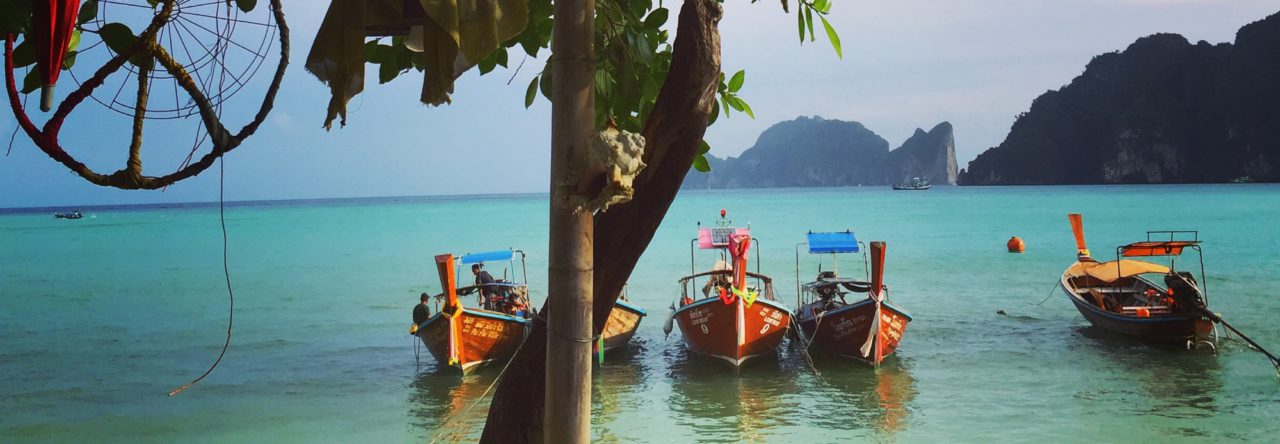It might seem obvious, but to some maybe not so. You may not speak the language. The subway map may not be as thoughtfully laid out like the Tube map Harry Beck masterpiece of 1931. The bus system may not be as slick as the one in your home town. If you own a car, and you live in the sticks, you may not even be used to using it back home.
But taking public transport is not only a good thing to do in everyday life to help combat air pollution, it is also something that can have an enormously uplifting effect on your travels, where ever those travels may take you. Taking public transport is not only for travellers on a budget. Even if you’re not travelling independently and have booked a trip which includes transfers and some tours, you may have some free days, when you should definitely get yourself on to public transport. Good travel companies will even be able to include certain guided tours where using public transport will be an integral part of the tour.

Waiting for a train in Myanmar, a fascinating place to travel by rail.
If you’re arriving somewhere late in the evening, you may just prefer to jump in a cab, or have a prearranged transfer, understandable. But what about the next day. Can you avoid a cab, insteading jumping on the bus, or the subway? If you’re travelling further afield, is there a train or a long-distance bus? If it’s a long distance bus, why not choose the bus the locals take, rather than one laid on by a private tour company. But why go take these steps? Well here’s my top reasons why.
Interact with locals.
Public transport is, unsurprisingly, where you’ll find locals travelling. It is locals and how local people live and go about their daily life, that surely make and give a place its identity.
If you’re isolated in a car, you may see things through the window, and perhaps have some small talk with the driver, but this cannot compete with all the people you’ll meet if on public transport, especially if travelling by train. Some of my fondest memories of travel are on trains. India is my favourite country for train travel. I’ve taken some epic 50 hour journeys in India, and met some great characters along the way. For worldwide train travel information the best online source by far is Seat61.
Eat local snacks.
In many countries such as Thailand and India you’ll find independent local snack vendors on the trains, getting on at long breaks, or staying on the train for a few stops. Long-distance buses are also great places to try local snacks. Snack vendors will often come to the windows of the buses, or sometimes board the buses and go up and down the aisles. The first time I saw fried tarantulas was on board a public bus in Cambodia.
If you book your bus through a local agent, make sure you specify you’d like to be on a local bus. In many Southeast Asian countries the local agents are able to book both local buses and tourist buses. A bit more hassle, but if you go directly to the bus station to buy your ticket, you’ll be sure you be on a local bus. Although my feeling is, if local agents can book a local bus for you, use them. It’s good to support their business, and it will save you a trip to the bus station.
Save money.
Public transport is almost always the cheapest way to travel. You can spend that extra money on a few beers when you arrive.
Avoid scams.
In some towns and cities, there are taxi drivers that look out for tourists to try to overcharge, by refusing to use the meter or by taking unnecessarily long routes. This is completely avoidable if travelling on bus, subway or any other form of regulated public transport.
Save time.
Travelling in the city is often quicker by public transport as you’ll avoid traffic jams. Not only the subway, but if the city has bus lanes, buses are also often faster.
Stretch your legs.
You can’t get up and walk around in a car, but you can on a train, and some buses. Some of the overnight trains in Thailand have restaurant cars that sometimes have karaoke and can be a lot of fun.
See more scenery.
Trains have bigger windows. Some trains have open windows, and even open doors that really allow you to enjoy the scenery. Buses have bigger windows and are higher up than cars, allowing a better perspective.
Learn some local language.
You may need to learn the basics in order to use the public transport, so this will give you a good incentive. When your on the transport, you can practice some basic phrases and if you’re on a long-distance trip, you can ask locals to teach you more.
Subscribe to the blog or check back soon for some great places around the world to take a bus or train journey.

Leave a Reply